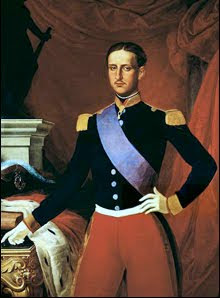 |
Michelina De Cesare
Oct. 28, 1841 — Aug. 30, 1868
|
On March 17, 1861 the Kingdom of Italy was born. The events that led to its birth are many but most are hidden behind the myths of the Risorgimento, a romanticized, but false, version of Italian unity. Portraying themselves as liberators, the House of Savoy effectively annexed and colonized the Kingdom of the Two Sicilies and Papal States. It didn't take long after unification that the lies and false promises of the Northern conquerors become apparent. The new rulers not only continued the unjust policies they promised to eliminate but in many cases they exacerbated them.
Betrayed and desperate, the people of the South rebelled against the Piedmontese and their collaborators. For well over a decade the Northern invaders waged a bloody war of repression against the Southern insurrection, deceitfully referred to as "the war against brigandage." The occupational forces committed many atrocities against the so-called "brigands," perhaps the most famous of which were the Pontelandolfo and Casalduni massacres. The Southerners retaliated by exacting retribution whenever possible. At its peak, over 100,000 soldiers were needed to suppress the revolt. Tribunals, roundups, deportations and summary executions were an integral part of Italian nation building.
 The flames of rebellion burned across Southern Italy but some regions were hotter than others. Terra di Lavoro, the northern province of Campania, was one of these hotbeds. Waging a guerilla war against their foreign oppressors, partisans consisting of former Bourbon soldiers, loyalists and a desperate peasantry fought not only to defend the legitimacy of the Bourbons but also to protect their families and way of life.
The flames of rebellion burned across Southern Italy but some regions were hotter than others. Terra di Lavoro, the northern province of Campania, was one of these hotbeds. Waging a guerilla war against their foreign oppressors, partisans consisting of former Bourbon soldiers, loyalists and a desperate peasantry fought not only to defend the legitimacy of the Bourbons but also to protect their families and way of life. |
| Coat of arms for Terra di Lavoro |
None of this however, is out of the ordinary; there were many such men fighting across the Mezzogiorno. What really makes the Guerra Gang famous was the presence of "La Brigantessa": Michelina De Cesare. Many women were involved in the Southern resistance movement, so having a female member was not in itself what made them famous. What made Michelina special was that she was also one of the group's leaders and primary tacticians, and was well respected by the men who followed her into combat.
Official Italian history purposely disparages the female fighters by falsely describing them as simply the lovers or relatives of male brigands. Michelina proved otherwise.
 |
| "La Brigantessa" |
Born in Caspoli on October 28, 1841, she grew up poor. Embittered by experiencing life under Northern occupation, Michelina decided to do something about it. At the age of 20 she met Francesco Guerra and joined the resistance in 1861. They became lovers then secretly married in a small church in Galluccio. It is said she was as fearless as she was beautiful and would always accompany the men in battle. For seven years she and her fellow partisans attacked and harassed the occupational forces, earning a well deserved reputation among both the Southern people and the oppressors.
A serious effort was made by the Piedmontese to eliminate the partisans which included monetary rewards but also threats of mass deportation and violence, a common practice used by the conquerors against the people they supposedly "liberated."
On August 30, 1868 a group of Carabinieri and National Guardsmen scoured the slopes of Monte Lungo, in Mignano, in search of the Guerra Gang. Betrayed by an informant, the rebels’ whereabouts were divulged. Unwilling to miss an opportunity, the soldiers braved a violent thunderstorm to catch their prey off guard. During the search a flash of lightning revealed the group’s position. The heavy rain and thunder helped conceal the soldiers approach. At about ten o'clock at night they ambushed the unsuspecting camp. The soldiers opened fired and massacred the rebels. Francesco Guerra, James Ciccone and Francesco Orsi were slain.
 |
| The work of the "Liberators" |
Michelina was captured alive, tortured for information, gang-raped, then murdered. The violent interrogation was unsuccessful; at age 27 she died heroically while refusing to betray her comrades. Her naked and mutilated corpse was exposed to the nearby villagers as a warning. However, instead of deterring the people, the outrage reinforced their support of the rebellion. Even in death she contributed to the cause.
Michelina De Cesare, the Lioness of the South, has earned her place in the pantheon of Southern Italian rebels, which includes the legendary Masaniello and Fra Diavolo, among others.
"Meglio na buona morte ca na mala vita."
("Better a good death than a bad life.": Neapolitan proverb)





































